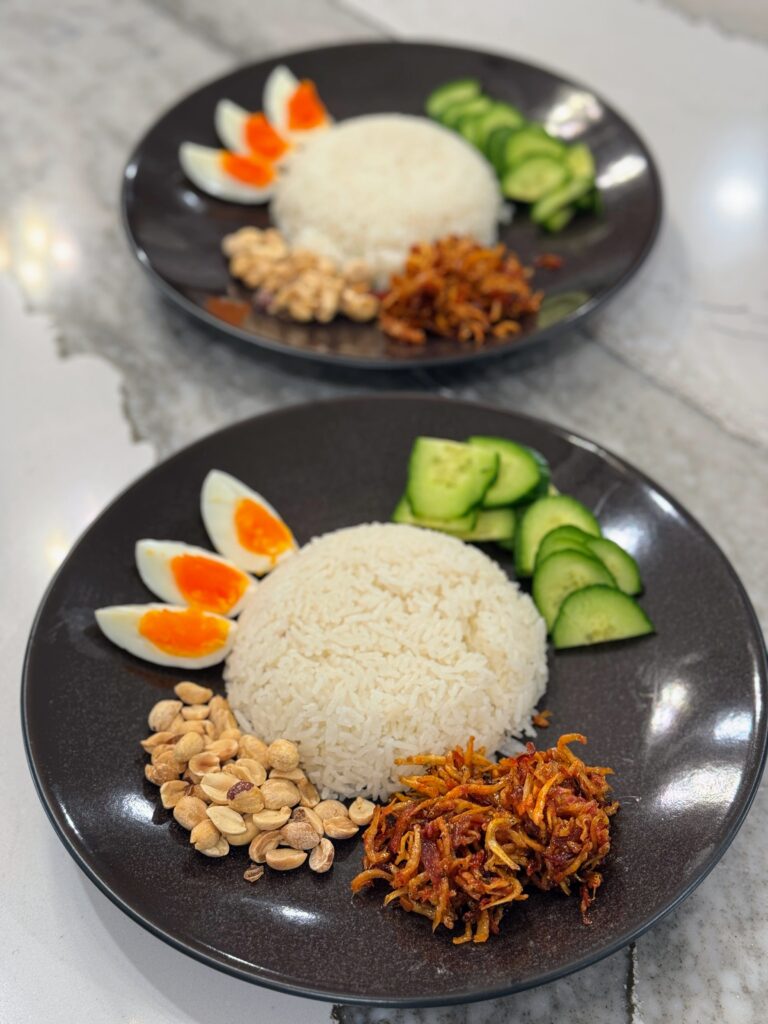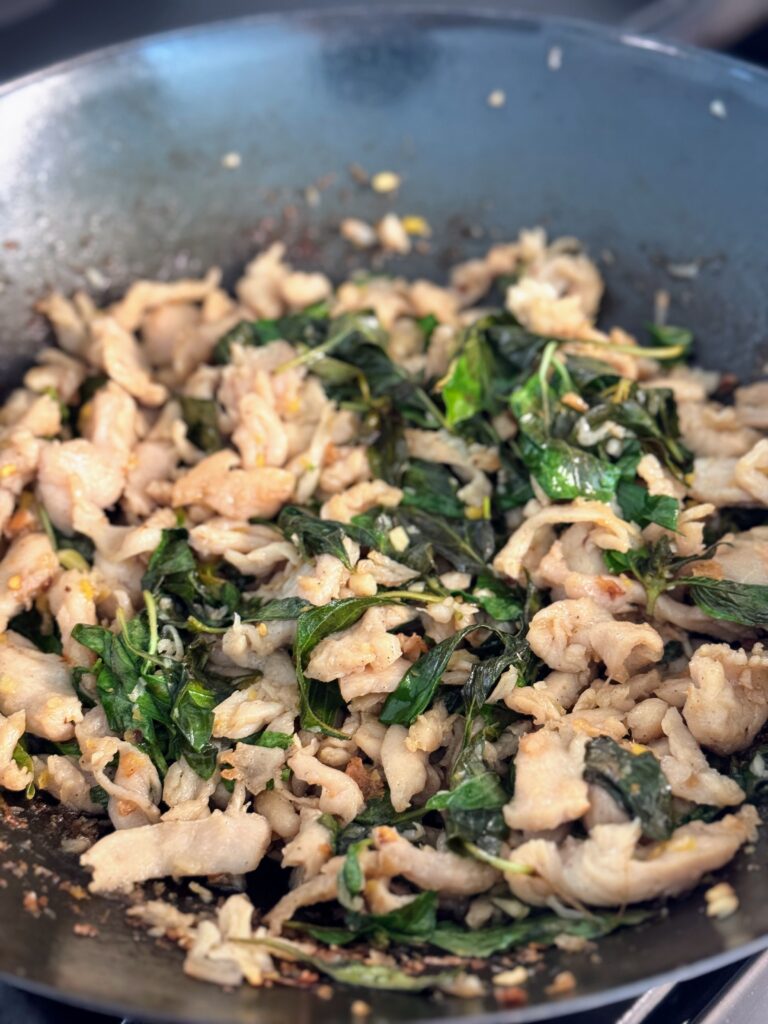Nasi lemak is a Malaysian breakfast staple but I love it for breakfast, lunch, and dinner. I already have a knockout nasi lemak recipe but it’s time-consuming, and sometimes I want a shortcut without sacrificing flavor. This version saves you the trouble from making your sambal ikan bilis base from scratch, and you can make many of the components ahead of time, too.

Ingredients:
For the coconut rice:
- 2 cups jasmine rice, rinsed and drained
- 1 1/2 cups water
- 1/2 cup plus 2 tablespoons coconut milk
- 1 bay leaf
- Salt
For the sambal ikan bilis:
- 1 tablespoon avocado oil
- 1/2 cup dried anchovies
- 1/2 cup sliced shallot
- 1/4 cup chili garlic sauce
- 1 tablespoon sugar
- 1-2 tablespoons lime juice
- Salt
To serve:
- 3 hard-boiled eggs, peeled and quartered
- 2 cucumbers, sliced on an angle
- Dry-roasted peanuts
- Make the coconut rice: combine the rice, water, coconut milk, bay leaf, and a pinch of salt in a rice cooker and cook according to rice cooker instructions. Let stand 10 minutes, then fluff the rice and keep warm.
- Make the sambal ikan bilis: heat the oil in a medium skillet over medium heat. Add the anchovies and let them sizzle in the oil, stirring until they are golden and crisp, about 3 minutes, reducing the heat as necessary so the fish does not burn. Remove the fish with a slotted spoon. Add the shallot to the pan, return the heat to medium, and cook the shallot in the oil until lightly caramelized, about 10 minutes.
- Return the anchovies to the pan and stir in the chili garlic sauce. Stir in the sugar and lime juice. Remove the mixture from the heat and stir until the sugar is dissolved. Season with salt if needed.
- Assemble the dish: pack a small bowl with coconut rice and invert onto a plate. Garnish with quartered eggs, a scoop of sambal ikan bilis, cucumber slices, and peanuts.




